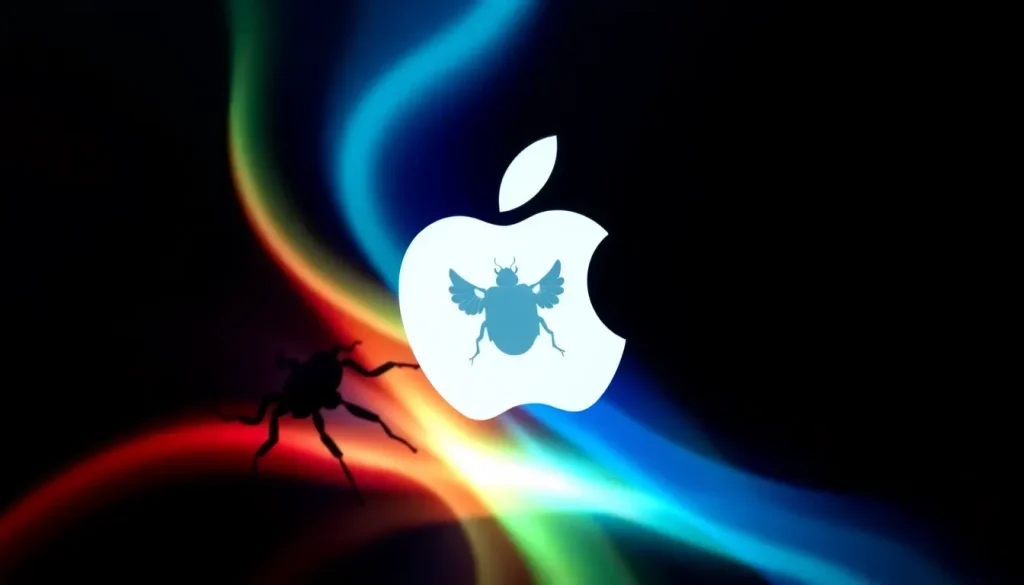Apple increases payouts for its Bug Bounty Program

The world of cybersecurity is constantly evolving, and tech giants like Apple are making significant strides to ensure their platforms remain secure. One of the most notable initiatives is Apple’s bug bounty program, which has recently seen substantial enhancements. For those interested in cybersecurity and ethical hacking, understanding this program and its implications is crucial. Let’s delve deeper into the details of Apple’s updated bug bounty program.
- Understanding Apple’s bug bounty program
- What are the updates to the bug bounty payouts?
- What types of vulnerabilities are eligible for the bounty?
- Encouraging participation from new researchers
- Why are bug bounty programs crucial for cybersecurity?
- What does the future hold for Apple’s bug bounty program?
Understanding Apple’s bug bounty program
Launched in 2016, Apple's bug bounty program was designed to incentivize security researchers to report vulnerabilities in its products, particularly in iOS, macOS, and other software. The program has now evolved significantly, reflecting the increasing sophistication of cyber threats. With the rise of hacking incidents and the importance of safeguarding user data, Apple is keen to ensure its ecosystem remains robust against potential attacks.
Initially, the program required researchers to register with Apple, which limited participation to a select group. However, in an effort to broaden its reach, Apple introduced a public version of the program in 2020, allowing anyone to report security issues and receive rewards. This shift has encouraged more researchers to contribute their findings, thus enhancing the overall security of Apple’s products.
What are the updates to the bug bounty payouts?
One of the most significant changes to the program is the increase in payout amounts. Apple has announced that starting in November 2025, the top reward for a single vulnerability report will double to an impressive $2 million. Furthermore, with the introduction of a bonus system, this payout could potentially rise to $5 million for especially critical vulnerabilities.
These enhancements come in response to criticisms that Apple’s previous payouts were not competitive within the industry. While not the lowest, Apple’s previous rewards were often viewed as modest, leading to dissatisfaction among security researchers. The increase aims to attract more talented individuals to identify and report vulnerabilities before malicious actors can exploit them.
What types of vulnerabilities are eligible for the bounty?
The updated program outlines a broader range of security categories for which researchers can submit reports. Some of the key areas include:
- Wireless proximity exploits
- One-click WebKit sandbox escapes
- Remote code execution in critical system components
- Exploits related to privacy and data security
Apple’s commitment to addressing serious vulnerabilities reflects its strategic aim to proactively combat the evolving landscape of cyber threats. The company has also indicated that researchers can receive awards even before a fix is available for the reported issue, emphasizing its dedication to rapid remediation.
Encouraging participation from new researchers
To further encourage participation, Apple is introducing a new tier of rewards aimed specifically at less experienced researchers. Starting in November 2025, those who identify lower-impact issues will receive a guaranteed payout of $1,000. This strategy not only fosters a wider array of contributions but also helps cultivate the next generation of cybersecurity experts.
By providing financial incentives, Apple hopes to motivate individuals who may not typically engage with its bounty program. This approach can lead to a more diverse pool of findings, ultimately enhancing security measures across its platforms.
Why are bug bounty programs crucial for cybersecurity?
Bug bounty programs play a vital role in the cybersecurity landscape for several reasons:
- Proactive Defense: Encouraging researchers to identify vulnerabilities before they can be exploited helps strengthen security measures.
- Cost-Effective: Companies can avoid significant financial losses associated with data breaches by investing in bounty programs.
- Community Engagement: Building relationships with the cybersecurity community fosters collaboration and knowledge sharing.
- Continuous Improvement: Ongoing feedback from researchers helps companies adapt to emerging threats and enhance their security protocols.
Apple's enhanced bug bounty program is a clear indicator of its recognition of the importance of collaboration in cybersecurity. By incentivizing researchers to report vulnerabilities, Apple is taking a proactive stance in its defense strategy.
What does the future hold for Apple’s bug bounty program?
As Apple continues to invest in its bug bounty program, it is likely that we will see further enhancements and adaptations based on the evolving cybersecurity landscape. The company’s willingness to offer increased payouts and engage with a broader community of researchers demonstrates its commitment to protecting user data and maintaining trust in its products.
Additionally, it is expected that Apple will continue to refine its criteria for vulnerability submissions and expand the types of vulnerabilities eligible for rewards. This ongoing evolution will not only help Apple stay ahead of potential threats but also establish a benchmark for other tech companies to follow.
For those interested in learning more about the significance of Apple’s bug bounty program, check out this insightful video that discusses the potential financial rewards for discovering critical vulnerabilities:
In conclusion, Apple’s commitment to enhancing its bug bounty program is a testament to the company’s understanding of the critical role that cybersecurity plays in maintaining user trust and safety. As the landscape continues to shift, programs like these will be essential in ensuring that technology remains secure and resilient against potential threats.




Leave a Reply